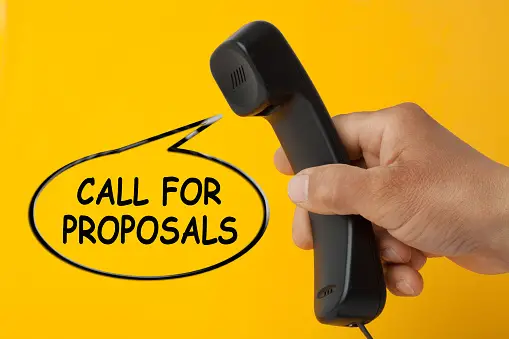Grant Readiness Checklist is a list meant to serve as a guide as you compile all the data that grant funders most frequently require. You will save time and effort later on when you are applying for grants if you have all of these documents arranged in one secure online location.
You can assess your organization’s grant readiness with the help of this five-question checklist to see if the time is right to submit an application.
1. Do you qualify?
To establish your organization’s ability to apply for cash, many grants have particular criteria. Obtaining your organization’s 501(c)3 tax-exempt letter will be the first step in becoming grant ready, assuming your group has already been incorporated. The IRS can provide these letters upon request for any public nonprofit organization with 501(c)3 registration.
If your organization does not currently have 501(c)3 status, you might be able to associate with one that does and that can act as your fiscal sponsor.
Additionally, you could be required to provide the following information: an EIN (Employer Identification Number); registration information for grants.gov, sam.gov, and a DUNS number (Data Universal Numbering System); and/or other information specified in the RFP (Request for Proposal) or RFA (Request for Application).
2. Do you have a distinct mission and vision?
Funders are looking for organizations that are distinctive and don’t offer equivalent services elsewhere. Your organization should be unique among other groups pursuing comparable objectives, and your mission statement should clearly describe your specific approach to tackling a problem in your community.
You should make sure that your organization’s mission is realistic in addition to having a strong sense of purpose.
3. Do you own the necessary infrastructure and resources?
Both tangible and intangible resources fall under this category. Does your organization have enough space, money, and transportation to continue operating as it is now?
What about the ability to track finances, a donor management system, new software, and computer systems?
Are your present clients adequately served by your personnel, do you have effective operating procedures in place, and do you have a loyal volunteer base supporting your cause?
4. Do you run successful programs and enjoy a solid reputation in the neighborhood?
Your organization needs creative initiatives that can show a measurable effect for the people served, much like your mission statement. All NGOs should regularly analyze how programs are performing and how well their personnel is doing.
It’s crucial that your programs continue to have a positive reputation for providing excellent customer service and attending to clients’ requirements. Letters of recommendation from partners and influential members of the community are another approach to draw donors’ attention to your organization.
5. How are your finances?
You must first make sure that your current finances are stable before accepting a new infusion of money. You want to have numerous revenue sources that can be precisely tracked across all of the programs and services offered by your company. If you anticipate rapid growth for your organization, you should have the right financial management processes in place in advance.
The following should be contained on the Grant Readiness Checklist to assess if your nonprofit is grant ready;
Tax Status Letter (501c3) – dated letter from the government that proves you have nonprofit status
❏ 990’s – A copy of the past two years
❏ Profit and Loss Statements / Financial Statement – past two years
❏ Balance Sheet – current year
❏ Annual Operating Budget – Covers all actual income and expenses for the previous year as well as the projections for the up-coming year
❏ Special Project Budget(s) – When you are submitting an application for a grant that will directly support a certain section of a project or program, having a project budget is helpful.
❏ Timeline for your project – Detailing what milestones you will reach and when. Larger projects can be broken down into phases.
❏ List of Board of Directors and Staff – Make sure that you have a list of board members that includes their name, profession, board title, term limit, and contact information.
❏ Evaluation Plan – It is important to have measurable outcomes for your project to show funders the impact your project will have within the community.
❏ List of other funding sources – Having this information is a great way to prove to funders that you have additional financial support for your project/organization.
Budget Narrative – This is a “must have” in our book, but it’s only occasionally requested from funders. It is a great way to clearly articulate what each of your budget line items are intended for.
By-Laws
Board Meeting Agendas and Minutes Articles of Incorporation
Proof of Matching Donor Funds – Award letter or written agreement that proves matching funds
are available for your organization.
Resumes of Board and Staff Members – We mentioned in the “must have” section that you’ll need a list and basic information and this takes it a step further by having resumes for each key team member. Many grant funders request resumes or qualifications for the individuals who will be leading projects.
Preliminary Architecture or Preliminary Engineering Reports – Typically for large scale
projects that include infrastructure improvements and are usually required by federal funders.
Grants.gov, SAM’s and DUNS number – This is required if you are applying to any federal or large state grant. The process is free, but can be time consuming so we recommend getting it handled beforehand.
Cost Estimates for Upcoming Work or Equipment – Shows donors that you actually crunched the numbers and are spending their money wisely.
❏ Business and/or Strategic Plan – This is not your fundraising plan, this is the foundation of your internal operating structure and is very important in setting up the foundation of your organization.
❏ Letters of Support for your Project – Demonstrates community buy-in; funders like to see proof that other people also believe in your mission and goals.
❏ Newsletters / Annual Reports– Having samples of your newsletters helps show how you are communicating with your supporters and community.
❏ Recent Audits – Not every nonprofit will be required to conduct an audit, but if you have one it is good to keep on file.
❏ Organizational Chart – This shows the internal structure of your organization and the reporting/relationship hierarchy.
❏ Logic Model – excellent way to impress your funders; it’s a visual representation of your program design and function which can help you prioritize your funding goals.
❏ Clear and inviting website – You want your website to be easy to navigate so that potential funders can learn more about your mission, goals and those that you serve.
❏ Guidestar Profile (recently combined with Foundation Center to become Candid) – Funders check this for financial transparency, so it is important to keep up to date!
❏ Social Media Platform(s) – A quick and easy way for funders to learn about your organization and how you are engaging in the community.




